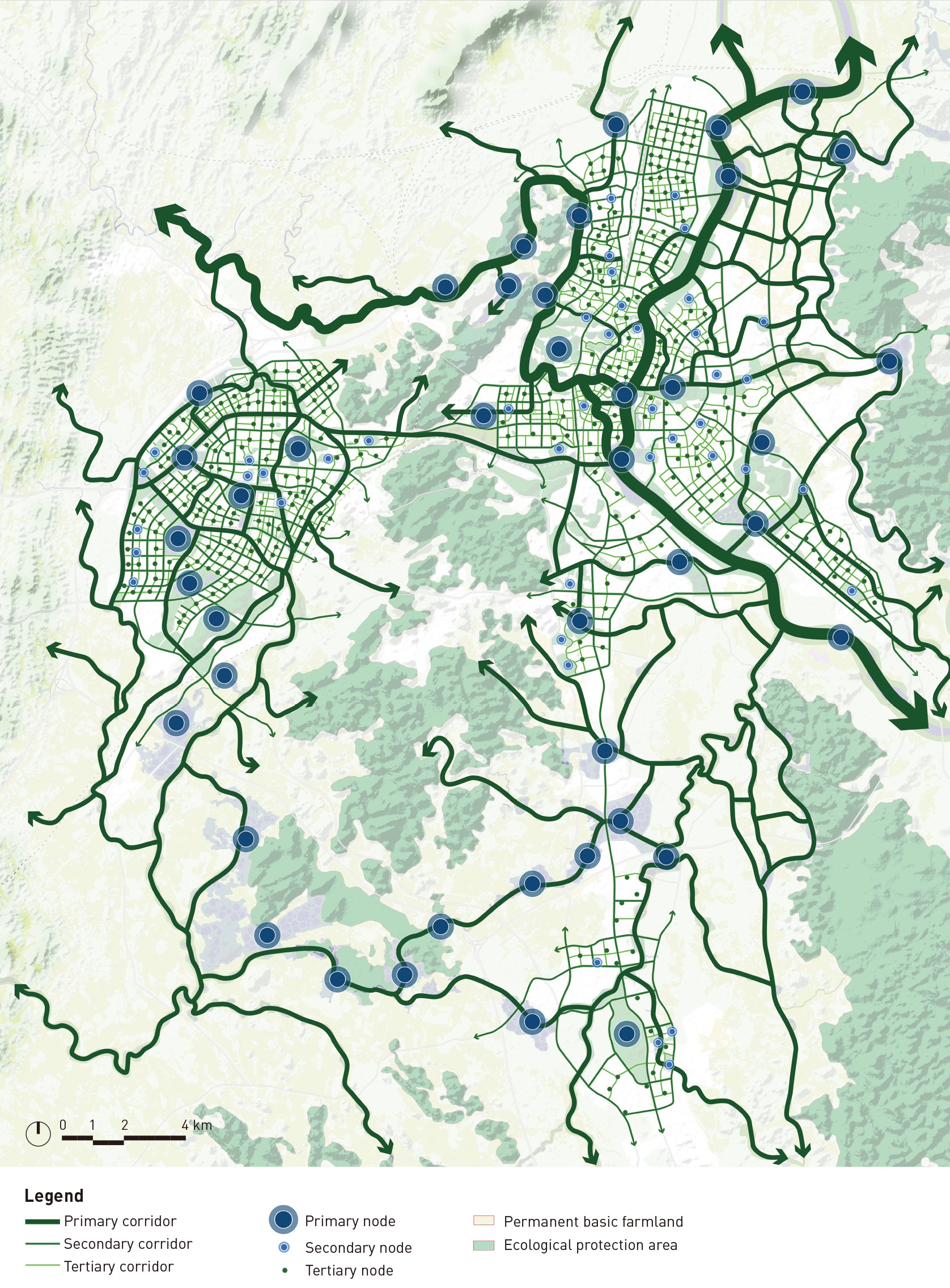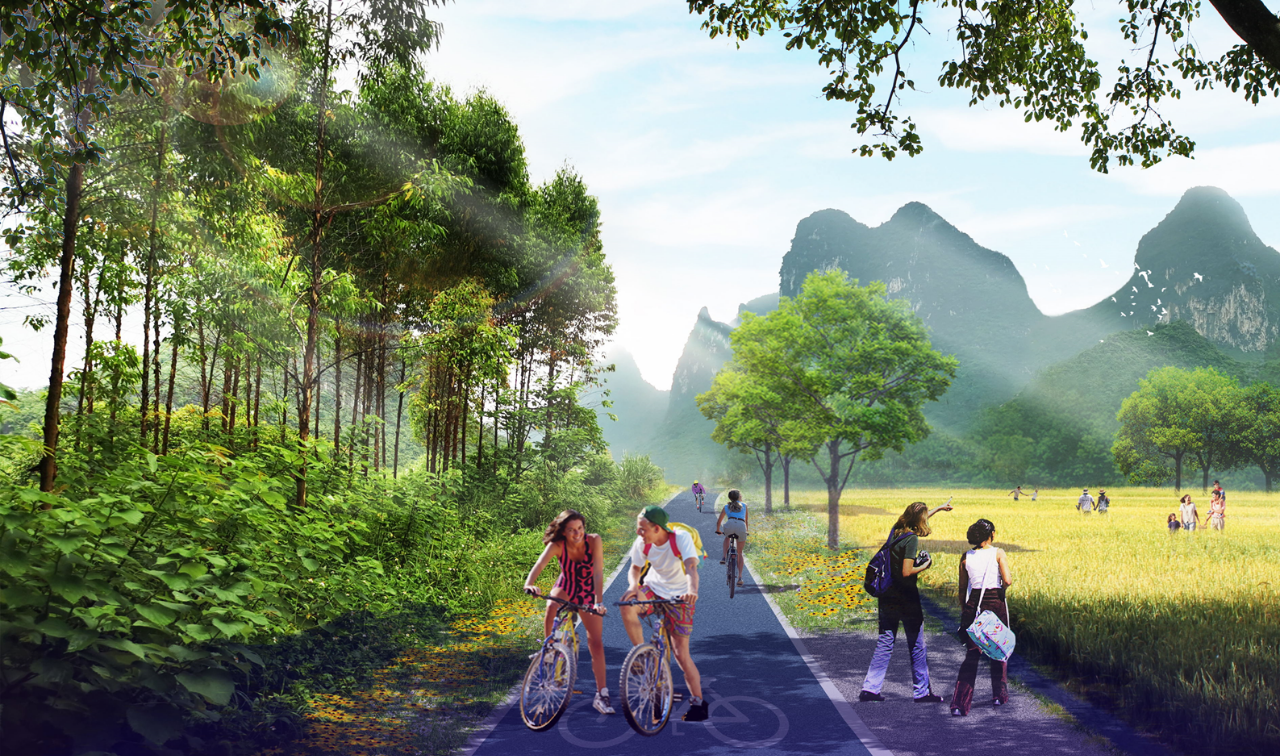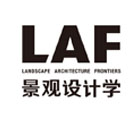俞孔坚:别让更多的桃花源消失在黎明之前

© 土人设计
中国众多地区都拥有得天独厚的自然与文化资产和气候条件,具备成为世界级的旅居目的地的潜力。但长期以来,当地单一的观光旅游开发模式、粗暴的基础设施建设方式和粗放的土地开发模式,使大量不可再生的自然景观和乡土文化景观遭到破坏。笔者认为,随着人民对美好生活的需求和审美品位不断提高,旅居生活将成为未来社会的重要产品需求。在新的基础设施建设高潮来临之际,中国广大具有独特自然和文化景观的区域,有必要规划和建设面向未来的世界级旅居目的地的新型基础设施,并有必要尽快制定相应的乡村土地利用策略。本文介绍了笔者向桂林市政府提出的“成就世界级旅游城市的三项建议”,旨在呼吁相关决策者抓住即将到来的基础设施建设和正在进行的乡村振兴的机遇,构建面向未来、作为世界级旅居目的地的新型基础设施。这三项建议也同样可为其他具有成为世界级旅居目的地潜力的区域决策者提供参考。
别让更多的桃花源消失在黎明之前
——构建服务于高品质旅居生活的新型基础设施
暨桂林成就世界级旅游城市的三项建议
俞孔坚
北京大学建筑与景观设计学院教授
原文刊发时间:2022年5月
广西桂林、安徽黄山、江西婺源、四川凉山、云南大理、贵州兴义、新疆吐鲁番、海南岛全境、西藏全境等地,都拥有堪称得天独厚的自然与文化资产和气候条件,完全可以成为世界级的旅居目的地。但长期以来,当地单一的观光旅游开发模式使这类优质资产得不到应有的价值体现;同时,粗暴的基础设施建设方式(包括大规模的乡村拆迁和工业化的乡村水利工程等)和粗放的土地开发模式,使大量不可再生的自然景观和乡土文化景观遭到破坏。随着城市化水平的提高,人民对美好生活的需求和审美品位不断提高,旅居生活将成为未来社会的重要产品需求,而那些看似寻常的乡土文化景观资产将成为稀缺资源。
2022年4月,中央财经委员会第十一次会议召开,研究全面加强基础设施建设问题。在新的基础设施建设高潮来临之际,中国广大具有独特自然和文化景观的区域,有必要规划和建设面向未来的世界级旅居目的地的新型基础设施,并有必要尽快制定相应的乡村土地利用策略,避免更多的桃花源消失在黎明之前。在同一时间,桂林市召开“2022年漓江论坛”,笔者向桂林市政府提出“成就世界级旅游城市的三项建议”,旨在呼吁相关决策者抓住即将到来的基础设施建设和正在进行的乡村振兴的机遇,构建面向未来、作为世界级旅居目的地的新型基础设施,并制定新型乡村土地利用策略。
桂林打造世界级旅游城市的行动面临重大挑战——既要保护绿水青山,又要成为金山银山。唯一的途径是提升桂林山水这一世界级魅力景观的生态系统服务,将低质量的观光旅游转型为高品质的世界级旅居生活产业。这意味着需要构建一种服务于高品质旅居生活的新型基础设施——生态基础设施、慢行基础设施,以及促进乡村活化、满足浸入式旅居生活方式的土地利用机制。为此,笔者提出以下三项关键措施和建议。
第一项建议,构建魅力景观网络。为兑现桂林山水景观的巨大生态系统服务价值,这一魅力景观网络需从宏观、中观、微观三个尺度构建,形成“一心两环”格局:“一心”为桂林城区,“两环”分别是南部的“山水旅居环”和北部的“乡土遗产环”,漓江就是这“一心两环”之间的纽带。同时,这一魅力景观网络可通过以下四类国土保护和修复措施来实现。
1)国土海绵化。以流域为单位构建水韧性国土,利用基于自然的解决方案调节旱涝:源头滞蓄雨水,径流过程减速消能,末端建立适应性景观,使国土得以滋润,万物生机勃勃。
2)水系去硬化。河道渠化硬化是桂林山水景观的大敌,钢筋水泥修筑的防洪堤坝使水生态系统和山水景观的价值都遭受了毁灭性损害。
3)田园有机化。对具有独特魅力的乡村地区而言,绿色有机产品生产所能带来的综合生态系统服务价值远远高于工业化量产的大宗农产品,尤其是就田园景观的审美启智服务而言。即使不能在全国范围内实现生态和绿色农业,至少桂林等少数魅力景观区域具有推行试点项目的潜力。
4)乡村遗产保护和活化。过去几十年间,大量传统村落被拆迁,可谓一去不复还;同时,残存的村落也面临大面积凋敝。然而,被动保护只能使凋敝加速,唯一的出路在于活化利用——在保护乡村遗产原真性的同时,基于可逆、可辨识的原则,活化利用乡村遗产,使其成为魅力景观的一部分。
第二项建议,游在画中——浸入式体验,构建慢行网络,实现自由行旅。经过一年的研究,我们构想了一个覆盖桂林全域、以“三横三纵一环”为骨架的绿道网络,为全域自由行旅提供慢行系统,包括自行车道、水上游览系统、步道、马道,以及一条小火车专用游览线。该慢行系统北至灵渠,南到阳朔,串联起众多重要古镇和古村,使魅力景观能够最大限度地服务于旅居者的需求。在此基础上,重点打造漓江两岸的慢行系统。与服务于传统观光旅游产业,追求快速、大运量、集中式交通组织方式不同,慢行系统是低干扰、渗透式和潜入式的,由景观解说系统和驿站服务系统连接魅力景观节点、文化服务设施和栖居地,可以更好地服务于旅居者自由分散、慢行和浸入式的个体活动。
第三项建议,居在画中——活化画里乡村的诗意生活。这种诗意栖居、生态优农、自由行旅、研学启智、艺术文创五位一体的生活模式,笔者称之为“望山生活”,亦是桂林全境实现从低质量的观光旅游走向世界级高质量旅居目的地的途径。该生活模式的实施难点在于需兼顾集体建设用地的资本化与社会资本的安全保障,即在保障村民利益的前提下激活闲置资产。采用插队和拼贴模式[1],可以盘活漓江两岸52个村庄的闲置用地,共计约15km2,改造出5.4万张适宜于高品质旅居者需求的床位,每年为广大村民增加营收近100亿。如此,有望在满足城市旅居者对山水画卷般幸福生活的向往的同时,实现漓江两岸广大地区的乡村振兴。

依据上述三大关键策略建议,终将实现旅游方式的变革,成就桂林从低质量的观光游览地向高质量、可持续发展的世界级旅居目的地的转型。这些策略仅要求低成本投入就能够持续提升山水和田园景观魅力,带动当地经济增长,成就乡村振兴和共同富裕目标,真正使绿水青山成为金山银山——这三项建议也同样可为其他具有成为世界级旅居目的地潜力的区域决策者提供参考。
以下为文章英文版本
引用格式及所在主题刊详细信息见文末
We Cannot Lose Rural Paradises Anymore
—Building New Infrastructure for Quality Residential Tourism and
Three Suggestions for Guilin Towards a World-Class Tourist City
YU Kongjian
Professor of College of Architecture and Landscape, Peking University
Published in May 2022
With blessed assets in natural resources, cultural legacy, and climatic conditions, a number of regions throughout China—such as Guilin in Guangxi Province, Huangshan in Anhui, Wuyuan in Jiangxi, Liangshan in Sichuan, Dali in Yunnan, Xingyi in Guizhou, Turpan in Xinjiang, as well as Hainan Island and Tibet—are qualified as world-class residential tourism destinations. For years, single-purpose tourism-oriented development modes have failed to fully manifest such high-value assets; meanwhile, extensive infrastructure construction (large-scale rural demolition, industrialized rural water conservancy projects, etc.) and generic land development strategies have irreversibly destroyed a large number of vernacular natural and cultural landscapes. With the increased urbanization level, people’s growing demand for a good life and aesthetic opportunities will boost residential tourism in the near future, when these seemingly so-ordinary vernacular cultural landscapes will become scarce resources.
In April 2022, the 11th meeting of the Communist Party of China's Central Financial and Economic Committee promoted the integrated advances in infrastructure development. To seize the opportunities in current infrastructure construction, it is necessary to plan and build a new type of infrastructure system for vast areas of China where world-class residential tourism destinations can be created based on vernacular natural and cultural landscapes, and to develop related rural land use strategies proactively, avoiding the loss of more rural paradises. Synchronously, at the "Lijiang River Forum 2022" held in Guilin City, the author proposed Three Suggestions to Achieve a World-Class Tourist City to the Guilin Municipal Government. In the context of the upcoming infrastructure development and the ongoing rural revitalization, it is the time to build future world-class residential tourism destinations by constructing a new type of infrastructure system with related rural land use strategies.
Such an ambition challenges Guilin to both protect its outstanding natural resources and boost local economic growth. The wise solution is to improve the ecosystem services of its prominent natural landscapes, transforming its existing traditional tourism towards world-class residential tourism. This requires the city to develop a supporting infrastructure system, including ecological slow-traffic infrastructures and land use strategies that promote rural activation and meet the needs for immersive residential tourism. To this end, the author proposes the following three key suggestions.
First, develop a Charming Landscape Network. At macro-, meso-, and micro-scales, this network will form a "one-heart, two-rings" pattern that can tap the values of the ecosystem services of Guilin landscapes. "One-heart" refers to the urbanized area of Guilin, and "two-rings" refers to the "residential tourism landscape ring" in the south and the "rural heritage ring" in the north. Lijiang River runs across and links up the heart and rings. Four measures of land protection and restoration are suggested for the construction of this Charming Landscape Network.
1) Build territorial land sponges. Nourish land by improving water-resilience at watershed scale; alleviate droughts and floods with Nature-Based Solutions; and store rainwater at the source, decelerate runoff, and establish an adaptive landscape at the end.
2) De-harden water system. Channelization has deteriorated Guilin landscapes, where concreate dams ruthlessly damage both water ecosystems and the landscape values.
3) Develop organic farming. For rural areas with unique landscapes, farmlands for organic products can bring about higher overall ecosystem services than those for industrialized bulk agricultural products, especially concerning the aesthetic enlightenment service. Considering difficulties in popularizing ecological green agriculture nationwide, cities such as Guilin with unique landscapes can become pilots to develop organic farming.
4) Protect and revitalize rural heritage. In the past decades, many historic villages have been demolished, while the remaining ones are tumbledown. A tactical approach to revitalizing these villages, instead of adopting passive protection methods that offer little help in the dilapidation, is to integrate such rural heritage as part of the unique landscapes by preserving their identifiable authenticity under principles of reversible transformation.
Second, construct a slow traffic system for immersive self-service individual travelers. Based on a one-year research, the author’s team proposed a slow-traffic tourist network with a skeleton consisting of a series of crossed greenways and a green loop, which covers the whole area of Guilin with trails for cycling, walking, horse riding, and water tour, as well as a railway for mini tour train. Spanning from Lingqu Canal in the north to Yangshuo County on the south, the tourist network also links up a number of ancient towns and villages, allowing visitors to better enjoy the attractive landscapes. The slow traffic system along Lijiang River will be key to the entire network. Different from the high-speed, intensive traffic system to support traditional tourism, the slow traffic system minimizes human interference onto the nature and encourages diverse immersive activities supported by carefully designed landscape nodes, cultural facilities, and homestay connected by interpretation and service systems.
Third, revitalize the poetic lifestyle in villages, i.e., "wangshan lifestyle" (literally mountain-viewing lifestyle) as called by the author, which is composed by poetic settlements, ecological agriculture, self-serve travel, educational enlightment, and artist and cultural creation. This is also an approach to realizing Guilin’s transition from a traditional tourist city to a world-class residential tourism destination. One main difficulty in this process is to balance the capitalization of collective construction land and the security of social capital, which means to activate idle assets by guaranteeing the interests of the locals. The "collage living–production" mode[1] proposed for Guilin can vitalize idle lands in the 52 villages in the riverfront, which cover an area of 15-square-kilometer and is planned to accommodate 54,000 beds for visitors. The estimated annual revenue is approximately 10 billion yuan. In this way, while realizing the rural revitalization of vast areas along Lijiang River, visitors can also have a joyful time within the picturesque landscapes.
The above three strategic suggestions for Guilin’s future development that require low inputs while can substantively promote local economic growth will ultimately renovate the regional tourism mode by transforming the city into a sustainable residential tourism destination with charming countryside landscapes. These suggestions which respond to the idea that lucid waters and lush mountains are exactly invaluable assets and facilitate rural revitalization and common prosperity can also provide reference for decision-makers of other areas with the same potential to become world-class residential tourism destinations.
参考文献
[1] Yu, K. (2017). New ruralism movement in China and its impacts on protection and revitalization of heritage villages: Xixi’nan experiment in Huizhou District, Anhui Province. Bulletin of Chinese Academy of Sciences, 32(7), 696-710. doi:10.16418/j.issn.1000-3045.2017.07.004
引文格式:
Yu, K. (2022). We Cannot Lose Rural Paradises Anymore—Building New Infrastructure for Quality Residential Tourism and Three Suggestions for Guilin Towards a World-Class Tourist City. Landscape Architecture Frontiers, 10(1), 4‒8. https://doi.org/10.15302/J-LAF-1-010022
翻译丨田乐,周佳怡
制作丨周佳怡,王颖,田乐
版权声明:本文版权归原作者所有,请勿以江南电竞官网登录入口 编辑版本转载。如有侵犯您的权益请及时联系,我们将第一时间删除。
投稿邮箱:info@landscape.cn
项目咨询:18510568018(微信同号)











